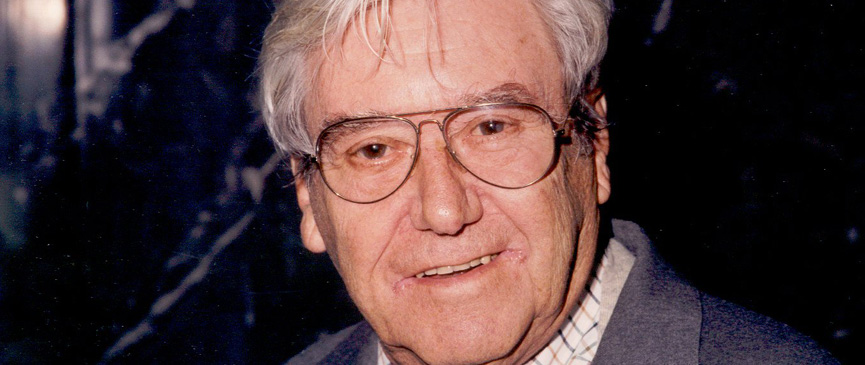The Princess of Asturias Foundation
Sección de idiomas
Fin de la sección de idiomas
Sección de utilidades
Fin de la sección de utilidades
- The Foundation
- HM The King
- HRH The Princess of Asturias
- 2023 Special
- Princess of Asturias Awards
- Area of Communication and Media
- Music Department
- Exemplary Town of Asturias Award
- 2012 Special
- 2013 Special
- 2014 Special
- 2015 Special
- 2016 Special
- 2017 Special
- 2018 Special
- 2019 Special
- 2020 Special
- 2021 Special
- 2022 Special
-
Important: COVID-19
-
Terms of Use
You are in:
Laureates
Start of main content
Roberto Matta
Prince of Asturias Award for the Arts 1992

Roberto Sebastián Antonio Matta, known as Robero Matta (Santiago de Chile, Chile, 1911 – Civitavecchia, Italy, 2002), he graduated in Architecture from the Catholic University of Santiago and travelled to Europe in 1933, meeting the avant-garde architects Le Corbusier and Alvar Aalto. Roberto Matta’s first works were exhibited in the Spanish Pavilion at the International Exhibition of Paris. It was in Paris that he met Magritte, Picasso –who was exhibiting his “Guernica” at the time– and Miró, whose painting techniques he was greatly interested in. He later met André Breton through Dalí and Lorca in 1938 and came to form part of the Surrealist movement, in whose magazine, Minotaure, he published several articles. Ten years later, he abandoned the Surrealist movement and staged an important joint exhibition with Asger Jorn.
See more
After living in Rome for four years, he returned to Paris in 1954. It was in Paris in 1956 that he produced his magnificent mural “Three Constellation Beings Facing the Fire” for UNESCO. The following year, the New York Museum of Modern Art (MOMA) organised a retrospective exhibition of his work, which toured to Minneapolis and Boston.
Following several trips to Cuba, he chaired the 1968 Havana Cultural Conference, where he delivered his lecture “Inner Guerrilla Warfare”. In 1970, he visited several Arab nations to meet artists and intellectuals from these countries and produced paintings for the Angola liberation movement. That same year, he also visited Peru and Chile, at the invitation of President Allende, and worked on collective murals with the Ramona Parra Brigade.
In 1970, the Berlin National Gallery, the New York Museum of Modern Art and various other cities organised several retrospective exhibitions of his works.
During the 1970’s and 80’s, he showed widely in the most important European and American cities, including New York, Rome, Paris, Milan, Venice, Mexico City, Bogota and Caracas.
Holder of the National Art Prize (1990), he was awarded the Praemium Imperiale in the category of Painting in 1995. From the 1960s on, he habitually lived in the Italian village of Civitavecchia, located north of Rome, making sporadic trips to his country of origin. Following his death, the then President of Chile, Ricardo Lagos Escobar, decreed three days of national mourning. The painter was buried in Tarquinia, in a crypt located under his house.
Various tributes to Matta were organized in 2011 to commemorate the centenary of his birth. The then Minister of Culture Luciano Cruz-Coke called this anniversary “Matta Year”. On 11th November of that year, an exhibition with more than 100 of the artist’s works opened at the Palacio de La Moneda Cultural Centre. The pieces, corresponding to Matta’s paintings, sculptures and drawings, were ceded by museums and art collections, both public and private. That same year, a documentary on the author was released entitled Intimatta, directed by his son Ramuntcho.
His works include: Psychological Morphologies (1938-1939), The Fabulous Track of Death (1941), The Vertigo of Eros (1944), The Djamile Issue (1958), The First Goal of the Chilean People (1971), Beyond Death to Life (1973), Cosmos New-Sanlúcar de Barrameda (Cádiz-Spain) (1992) and Verbo America (1996).
End of main content
Sección de utilidades
Fin de la sección de utilidades
- Legal document Legal document (Access key 8)
- | Privacy policy Privacy policy (Access key )
- | Social networks ???en.portal.pie.menu107.title???
- | Cookies ???en.portal.pie.menu110.title???
- | Site map Site Map (Access key 3)
- | Contact Contact (Access key )
- | XHTML 1.0
- | CSS 2.1
- | WAI 'AA
© Copyright 2024. FUNDACIÓN PRINCESA DE ASTURIAS



